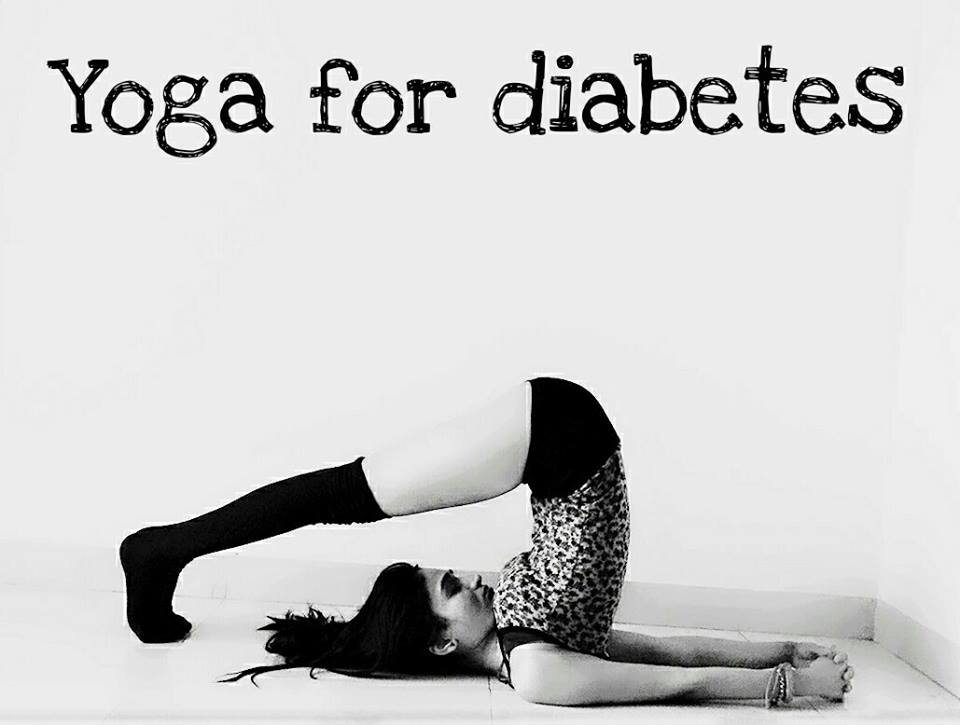Yoga effective for diabetes proven research
Category : Yoga
Diabetes is a metabolic disorder, which has become a major health challenge worldwide.
Modern science evidence confirming benefits of yoga for diabetes
Pranayama (therapeutic breathing) and yoga postures have a therapeutic effect on cognitive brain functions in type 2 diabetes patients
A study consist of sixty patients of type 2 diabetes were recruited from diabetic clinic and divided into two groups – control group on only conventional medical therapy and yoga-group on conventional medical therapy along with pranayama and yoga-asana.
Study concluded that yoga has a beneficial effect on P300 or P3 (a component of endogenous cerebral evoked response that assesses higher functions of the brain) and thus can be incorporated along with the conventional medical therapy for improving cognitive brain functions in diabetes. {source}
The practice of Yoga-nidra improves treatment outcomes in type 2 diabetic patients on oral hypoglycemics.
A study was conducted on 41, middle aged, type-2 diabetic patients, who were on oral hypoglycaemic, to evaluate the effect of Yoga-Nidra on blood glucose level in diabetic patients.
These patients were divided in to two groups: (a) 20 patients on oral hypoglycaemic with yoga-nidra, and (b) 21 were on oral hypoglycaemic alone.
Yoga-nidra practiced for 30 minutes daily up to 90 days, parameters were recorded every 30th day. Results of this study showed that most of the symptoms were subsided, and fall of mean blood glucose level was significant after 3-month of Yoga-nidra.
Results of this study suggest that subjects on Yoga-nidra with drug regimen had better control in their fluctuating blood glucose and symptoms associated with diabetes, compared to those were on oral hypoglycaemics alone. {source}
Yoga has a positive role in modifying certain cardiovascular functions in type 2 diabetic patients.
A research conducted to study the effect of forty days of Yogic exercises on cardiac functions and on blood glucose level in Type 2 Diabetics. The yoga expert gave these patients training in yoga asanas and they pursued those 30-40 min/day for 40 days under guidance.
The results indicate that there was significant decrease in fasting blood glucose levels, post prandial blood glucose levels, and glycosylated hemoglobin, after yoga regimen. The pulse rate, systolic and diastolic blood pressure also decreased significantly after yoga.
Study findings suggest that better glycaemic control and stable autonomic functions can be obtained in Type 2 DM cases with yoga asanas and pranayama. {source}
Yoga offers a promising lifestyle intervention for decreasing weight related type 2 diabetes risk factors and potentially increasing psychological well-being.
A pilot study to collect feasibility and preliminary efficacy data on yoga for diabetes risk factors among people at high risk of diabetes. Primary outcomes included: changes in BMI, waist circumference, fasting blood glucose, postprandial blood glucose, insulin, insulin resistance, blood pressure, and cholesterol. This study also looked at measures of psychological well-being including changes in depression, anxiety, positive and negative affect and perceived stress.
Forty-one participants with elevated fasting blood glucose in were randomized to either yoga (n = 21) or a walking control (n = 20). Participants were asked to either attend yoga classes or complete monitored walking 3-6 days per week for eight weeks.
The study result found that participation in an 8-week yoga intervention was feasible and resulted in greater weight loss and reduction in waist circumference when compared to a walking control. {source}
Yoga therapy reduces hyperglycemia and the quantities of oral hypoglycemic drugs in patients with type 2 diabetes.
A combination of elementary simple yoga positions, relaxation exercise and respiratory exercise has clinically shown marked improvement in external respiration and blood counts. {source}
Subjects with type 2 diabetes in yoga practice reduced body mass index, improved well-being, and reduced anxiety.
A study was conducted to examine the effect of yoga practice on clinical and psychological outcomes in subjects with type 2 diabetes mellitus.
Study results concluded that participation of subjects with type 2 diabetes mellitus in yoga practice for 40 days resulted in reduced body mass index (BMI), improved total general well being, and reduced anxiety. {source}
Conclusion
Yoga may be an effective type 2 diabetes prevention strategy.
How yoga can help people with diabetes?
Some of the proven benefits of yoga for diabetes patients include
- Improved cognitive brain functions
- Better control at fluctuating blood glucose
- Reduced body mass index(BMI)
- Improved well being
- Reduces anxiety
- Greater weight loss
- Reduction in waist circumference
- Stable autonomic nervous system functions
- Reduces risk of other diabetic related problems
Are you or someone you know is suffering from diabetes? Did yoga helped you in managing diabetes and other related problems? Which asana or posture did you find most useful? Share your thoughts in the comment below!


